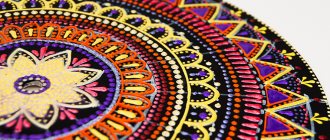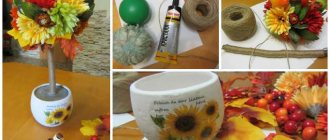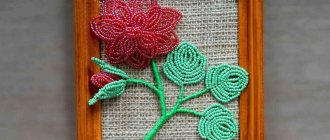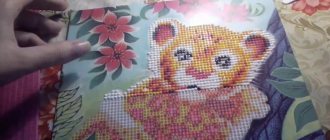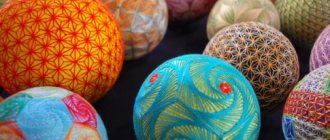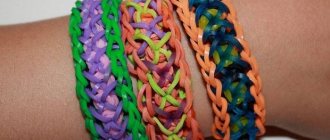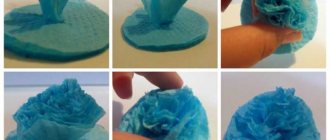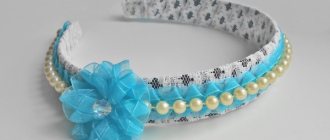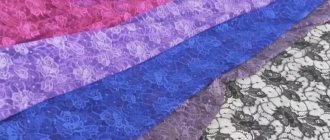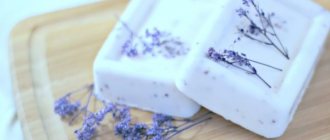Pros and cons of soap making at home
Making soap at home is attractive for beginner soap makers due to a number of advantages:
- minimal investment for the purchase of cheap equipment;
- accessible product manufacturing technology;
- opportunities to enjoy the creative process;
- the ability to create an environmentally friendly and natural product, unique in content and form;
- an unlimited number of consumers of the finished product (adults and children, men and women of any profession and status in society);
- the opportunity to experiment and create something new;
- likelihood of receiving income from the sale of your products;
- lack of competition due to the uniqueness of each product.
Disadvantages of home soap making:
- the need to invest your own resources at the initial stage of work;
- search for sales points and buyers;
- risk of allergies (making soap involves working with essential oils and chemical elements, so it is not suitable for people with sensitive mucous membranes and skin).
Making soap at home: what do you need?
Soap making is one of the areas of modern Hand made, which involves making useful things yourself. What should you stock up on before you start making soap?
1. Basic foundation. There are three basic options.
- Baby soap, which is grated and is the base for all other ingredients. This option is perfect for those who are starting to try themselves in this business. Having filled your hand, you can move on to other materials.
- Special soap base. It is available for sale in handicraft stores and is a ready-made base for work.
- Professional soap makers use oil and lye to make soap. The consistency of the future soap will depend on the amount of alkali added.
2. Oil included in the base. You can take any mineral or vegetable. The main task of this component is to nourish and moisturize the epidermis. Alternatively, the following oils are suitable:
- almond;
- castor;
- olive;
- cocoa butter, etc.
3. Flavors. Their role is played by essential oils from fruits and herbs.
When choosing such a flavoring, you should pay attention to the needs of the skin, since, for example: orange oil helps to saturate with vitamins and get rid of cellulite, but tea tree copes well with excess oily skin.
4. Pigment (dye). There are two options for coloring soap:
- food coloring or a special dye for coloring soap, sold in the same craft store;
- natural, herbal decoctions, vegetable and fruit juices come to the rescue here.
5. Auxiliary elements. These include:
- liquids for diluting soap base (milk, water, herbal infusions);
- decorative elements (poppy, flowers);
- scrubbing particles (coffee particles, oatmeal);
- vitamin supplements;
- glycerol.
6. Equipment for work. These are the dishes in which the soap mass will be boiled and the molds where it will harden.
General tips and tricks for home soap making
Tips for home soap makers:
- When you start making soap, you need to prepare all the ingredients and tools: the product hardens quickly, and you need to work quickly.
- Dyes, additional components, flavors must be selected before production begins, and not during the process itself.
- Pigments and fragrances should be used minimally so as not to get too strong a smell or color the body of the soap.
- Baby soap will melt faster if you add sugar or honey to it.
- You can remove air bubbles from the surface of the product by spraying alcohol on it.
- 1 tsp. Glycerin, when added to 100 g of soap base, will eliminate excessive brittleness of soap.
- It is advisable to grease the molds with oil: then it will be easier to remove the soap from them.
- If the product turns out to be too soft, next time you should add less liquid when making it.
- The soap can be easily cut with any knife, previously soaked in hot water and dried dry.
Decorations and additives for decoration
- Multi-color glitter for transparent soap - glitter;
- Mother-of-pearl (powder with an iridescent shade for a transparent surface and decoration);
- Water-soluble drawings with inscriptions for soap pictures;
- Sheets and relief stamps for imprinting patterns and decorations after production;
- Dried plants to complement and provide their caring shades.
Popular articles Dicentra flower (broken heart). description, planting and caring for the plant
No matter how interesting the soap recipes are, the following components will complement its qualities:
- Sugar, honey, sorbitol - soapiness and plasticity.
- Lanolin - improves the softening effect.
- Glycerin - moisturizing nuances.
- Lactic and citric acids - strength and improvement of antibacterial qualities.
- Shea, avocado - vitamin enrichment.
A quick way to make soap for beginners
How to make soap with your own hands at home - for beginners, it is advisable to practice with the easiest recipes: this way you can understand the features of the preparation technology and methods of work.
Recipe:
- The finely chopped base needs to be melted in a water bath.
- Add base oil to the liquid hot mass in a dosage of 3 tsp. per 100 g of product.
- Next, you need to add milk to the mixture to form the consistency of thick sour cream.
- After complete melting, the liquid is removed from the heat. Essential oil (2-3 drops) is poured into it, 1 tsp. glycerin, pigments, flavors, useful components.
- After adding all the components, the soap must be poured into molds, treated with alcohol and left until the mass hardens.
- After 2 days the soap will harden. You can remove it from the container and start using it.
How to make soap at home from scratch: cold and hot methods
Making soap “from scratch” at home is an interesting activity. In fact, this is the true process of creating soap, in which you can feel like a real chemist.
Safety rules for making soap at home “from scratch”: we take care of our health
The process of making soap at home with your own hands can leave serious burns on the skin. We study how to protect your health and prevent problems:
- protective equipment is required. We put on goggles, a respirator, and gloves;
- closed clothing and shoes will prevent accidental skin contact with alkali;
- The dishes are given away to this hobby forever; they are no longer suitable for food. It is better if it is glass or special containers for alkali;
- the windows should be open, the hood should be running, there should be no cooking process at this time.
Since alkali reacts with water, heating occurs, so the water should be cold, preferably with ice.
Important! Lye is poured into liquid oil, and not vice versa!
The solution with alkali is filtered, the oil and the substance must be completely dissolved and interact. You can evaluate the safety of a product using litmus tests. If the pH level is above 10, the soap is not ready to use.
The rules are the main PHOTO: pinterest.com
For a beginner, it is better to use ready-made recipes and follow them strictly.
Secrets of the masters: what you need to make soap at home “from scratch”
How to make soap from scratch? In this case, you don’t buy a soap base, but make it yourself from lye, saponification oil and liquid.
What to cook from the ingredients
If you plan to make a solid product, you will need the help of caustic soda (NaOH), in addition, the so-called superfat. It requires valuable and healthy oils.
The alkali will first dissolve in a healthy liquid (herbal infusions, milk), and then it will combine with fats.
In addition to the above ingredients, the list of necessary components includes sugar, honey, lactic, succinic, citric acid, lanolin, glycerin, dyes, flavors, and any fillers.
Tools
The list of tools includes the same as in the case of ready-made soap. Additionally, you will need a hand blender, a container for alkali, an electronic thermometer and a sieve for straining.
How to make soap at home: cold method
With the cold method, you first need to measure the lye strictly according to the recipe. Ice water is first poured into the container for the aggressive substance, then alkali is slowly and carefully added. Stir immediately!
The mixture must cool, at which time the solid oils are melted. They need to be mixed into a homogeneous composition.
Now measure the temperature of both mixtures; it should be 37–38 ºC. An alkali solution is added to the oil through a fine sieve. First, the mixture is stirred with a spoon, then with a blender, then again with a spoon and again with a blender. The composition should thicken.
The ingredients are mixed PHOTO: livemaster.ru
At this stage, you can add the remaining ingredients and pour the soap into the molds. The extracted product is wrapped in film and kept for maturation for more than 4 weeks. During this time, the product will enter the “gel” stage.
Interesting! This is the finished soap base, which is called the “trace” stage.
The result is gorgeous soap PHOTO: livemaster.ru
Let's watch a video on how to make soap from scratch:
How to make soap at home: hot method
At first, the process is exactly the same as cold cooking until the “trace” stage. But after that the path for soap is different.
Do you want to get ready-made soap quickly? Use the hot method PHOTO: aif.ru
The resulting soap mass must be placed in a water bath, and water is poured close to the level of the mass of the composition. Turn on low heat and simmer the solution for 3-4 hours under the lid. Water is added periodically, once every half hour.
Over time, the mass will become like a gel and will stop sticking to your fingers. After readiness, which is determined by litmus paper (pH indicator), you can fill the soap. At the end of the work, add superfat and pour the composition into molds. After a day you can wash!
Photo examples:
PHOTO: hobby-country.ru
PHOTO: svoimirykami.com.ua
PHOTO: livemaster.ru
PHOTO: krasodom.ru
PHOTO: svoimirykami.com.ua
PHOTO: varimylo.ru
PHOTO: ru-soap.livejournal.com
PHOTO: soapcreate.ru
PHOTO: shaktisoap.prom.ua
Honey soap
Components:
- base (matte or white) – 100 g;
- liquid honey - 2 tbsp. l.;
- flavoring "Honey" - 5 drops;
- yellow dye - 3 drops.
How to make soap with your own hands: a step-by-step recipe for honey soap
Preparation:
- The crushed base must be melted.
- After melting, pigment is added to it.
- Then you need to cool the product a little and pour honey and flavoring into it. They should not be added to the hot mixture to preserve their beneficial properties.
- The resulting mass must be quickly poured into a container. The product hardens within 1 hour.
Coconut
Components:
- soap base – 125 g;
- coconut oil – 1 tsp;
- coconut flakes – 12 g;
- almond oil – 7-8 g;
- sugar – ¾ tsp;
- lavender essential oil – 3 drops.
Only white ingredients are used for the product so that it resembles coconut in appearance.
Preparation:
- It is necessary to melt the crushed soap base.
- Add coconut oil to the melted mixture.
- Almond oil, essential oil, and coconut flakes are added to the mixture.
- At the end of the process, sugar is added, then everything must be quickly mixed and poured into molds.
- Spilled soap will harden after 3 hours, after which it is ready for use.
Picnic in the bathroom
Triangular soap shapes are common in the market, but FarmHouse Fresh has given this simple shape an aesthetic twist. This is how the gift set of milk soap turned out. The set contains six triangles of soap, the design of which resembles pieces of cheese. Lavender, honey, oatmeal, goat milk, blueberry with chia seeds and pistachio cream soap. To support the theme, the gift set is designed to resemble farm products and is packaged in a wooden box.
To complement this delicious set, wine soap from RusticJoySoap is perfect. It looks like a regular bar, but is made with red wine. As the manufacturer explains, red wine soap is ideal for the body, cleanses, has a powerful antioxidant effect and is suitable for sensitive skin.
Popular articles New Year's Advent calendar for children (with tasks)
Well, for those who understand alcoholic beverages, soap in the form of a Hennessy bottle is suitable. This soap is produced by SoapFantasybyNatalie.
Chocolate
Components:
- base – 100 g;
- ground coffee (not brewed) – 1 tsp;
- cocoa or chocolate – 1 tsp;
- milk - 1 tsp;
- avocado oil – 3-4 drops;
- fragrances - optional.
The soap will turn out to be three layers: for this, each layer must be poured separately. The first layer will be coffee, the second – chocolate, the third – with milk. The form for filling should be simple - in the form of a circle, square, triangle.
Preparation:
- Melt the base in a water bath.
- You need to add oil to it and mix until smooth.
- Divide the resulting liquid into three equal parts, pouring into separate containers.
- In the first bowl (the bottom layer of soap) you need to add coffee and add coffee or vanilla flavoring. After thorough mixing, pour into container. The soap should be allowed to harden slightly for 5-10 minutes.
- Pour cocoa and chocolate flavor into the second bowl, stirring. After this, you need to sprinkle the first layer of soap with alcohol and pour in the second layer of soap mass.
- The top milk layer is prepared in a similar way. It is possible to add flavors such as “Steam milk”, “Vanilla”, “Caramel” or “Coconut”.
We make beautiful decorative soap with our own hands at home
Buy a 100 gram bar of baby soap. Grate it on a coarse grater or finely chop it using a food processor; Place the soap crumbs in an enamel bowl and pour the selected liquid into it. Stir everything thoroughly. Place the saucepan with the mixture over steam for half an hour. If the soap does not melt well, add a teaspoon of honey or granulated sugar. Instead of steam, you can put a clay bowl with the mixture in the microwave for three minutes. After this, set the “heating” mode three times for half a minute. When removing the bowl from the oven, you should see an absolutely homogeneous mass of creamy consistency; Leave the mixture to cool for 15 minutes. After this, add essential oils, perfumes, dyes, and everything else that you have chosen to prepare the product. Mix the ingredients thoroughly and pour into the molds. To ensure that the soap comes away from the sides of the molds well, you need to lubricate them with Vaseline. If you decide to make marble soap, divide the bulk according to the number of colors you have available. Mix the soap with the color and pour each color into the mold step by step. You can decorate the soap with decorative inserts - sparkles, small toys, dried flowers , etc.; The soap takes about a day and a half to dry and harden.
But if you overdo it with liquid or oils, it will remain soft. In this case, you can put the molds with soap in the freezer for an hour.
After this, you need to put the soap on clean gauze or a towel (not terry).
Coffee soap-scrub
Components:
- base – 100 g;
- ground coffee – 1 tsp;
- fragrance “Vanilla” – 3 drops.
Preparation:
- The crushed base is melted in a water bath.
- You need to pour coffee into the liquid mass and mix.
- After removing from heat, you need to add fragrance.
- Pour the soap and sprinkle alcohol on top.
- The soap will harden in 3 hours, after which it is ready.
Coniferous
Components:
- base – 100 g;
- spruce essential oil – 6 drops;
- green pigment – 3 drops;
- chamomile grass or pine needles, crushed to a powdery state - 1 tsp;
- fir oil – 1 drop;
- alcohol.
Preparation:
- The base needs to be melted.
- After melting, add chamomile or pine needles and stir until smooth.
- Next, you need to remove the soap from the heat, add dye, essential oils and stir.
- Soap can be poured into molds by sprinkling the surface with alcohol.
- After 3 hours the product is ready for use.
Lemon
Components:
- base – 100 g;
- essential lemon oil – 5-6 drops;
- dried lemon zest – 1 tbsp.
Preparation:
- The crushed base must be melted in a water bath.
- Add lemon zest to the liquid mass and mix thoroughly. Do not stir quickly to avoid bubbles.
- Remove the mixture from heat and add essential oil to it.
- Next, you need to pour the product into the container and let it harden for 4 hours.
How to make soap at home in 5 steps
1. Melt the soap base. Prepare all the necessary ingredients and tools so that you have them at hand at the right time. Cut the soap base into small pieces, place in a container and place in a large saucepan in a water bath. Wait until the base is completely dissolved, while making sure that its temperature does not exceed 60 degrees. When boiling, bubbles form in the mass, which will spoil the appearance of the soap, especially transparent ones.
2. Add base oil. If you are using a ready-made base or baby soap, add base oil at the rate of one tablespoon per 100 g of soap. If you are making soap from scratch, follow the recipes. You can add one oil or several at once. With palm oil, the soap turns out to be as hard as possible, castor oil gives excellent foam, and coconut oil is responsible for the quality of cleansing. Olive oil is suitable for creating baby and hypoallergenic soap. Avoid sunflower, flaxseed and corn oils - they quickly go rancid and the soap spoils.
3. Add dye. For soap making from the base, professionals recommend choosing food colorings that do not cloud the mass and do not precipitate. 5 drops per 100 g of base is enough to give the soap a bright, rich color. When making natural soap from scratch, it is better to use mineral pigments: for example, titanium dioxide for whitening, chromium oxide for green, iron oxide for red.
4. Add essential oil. The concentration of essential oil in soap base is usually 1-4%. In made-from-scratch soap, the oil content varies depending on its volatility. Heavy oil - cedar, neroli, cinnamon - up to 1%. Light oil - orange, tea tree, eucalyptus - up to 10%.
5. Give the desired shape. Spray the selected mold with alcohol from a spray bottle. Carefully fill it with liquid soap and place it in a cool place for a couple of hours or in the refrigerator for five minutes. The packaging of the soap base usually indicates the hardening time. After the soap has hardened, dip the mold into hot water and remove it. Place on paper and leave to dry for two days.
Degtyarnoe
Components:
- natural base – 100 g;
- calendula oil extract – 1/3 tsp;
- birch tar (sold in any pharmacies) - 1.5 tsp;
- essential peppermint oil – 5-8 drops;
- formic alcohol (for spraying).
Preparation:
- The base is crushed and melted in a water bath.
- Calendula extract is added to the liquid mass. The mixture should not be hot, otherwise the beneficial properties of calendula will disappear.
- Tar is added, the mass must then be thoroughly mixed until smooth.
- After the mixture has cooled, you need to add mint essential oil to soften the pungent smell of tar.
- The finished mixture is poured into molds and sprinkled with alcohol to remove bubbles from the surface.
- Tar soap takes a long time to cool, so you can keep it in the refrigerator for 20 minutes to speed up the process.
What you need to create New Year's soap
To make soap with your own hands, it will be difficult for beginners to do the work from scratch, so we recommend a simplified version of preparing a gift for the New Year.
For the middle piece take:
- white soap base - 50 g;
- transparent soap base - 50 g.
For aroma and beauty:
- cosmetic oils;
- green food coloring;
- pine needle essential oil;
- needles from fir or Christmas tree, etc.
Besides:
- silicone Christmas tree molds for baking;
- pipette;
- alcohol;
- spoon;
- dried tangerine peel;
- coffee for decoration.
Homemade soap is prepared like this:
- In a water bath, melt a small part of the white base, after dividing it into pieces. Be careful not to let it boil during the process.
- Add cosmetic oil to it if desired, at the rate of 1.5 tsp. per 100 gr. A couple of drops of dye (with a pipette), 10 drops of essential oil.
- If desired, quickly add pine needles and tangerine zest for beauty, and stir until the mixture hardens.
- Pour the mixture into the Christmas tree cookie molds, wait until it hardens, then remove.
- Melt the transparent base, add essential oils and dye to it.
- Place the previously prepared Christmas tree from the white base into a larger mold.
- Be sure to coat the product with alcohol using a brush so that it does not fall apart. You can simply spray alcohol from a spray bottle. Place coffee beans, pine needles or pieces of zest on the tree at your discretion.
- Immediately fill the large mold with melted clear base. Cool and you can take it out.
- Cut off any irregularities with a knife.
DIY New Year's soap will delight your friends and loved ones. It all depends only on your imagination and capabilities.
Lavender
Components:
- soap base – 100 g;
- lavender essential oil – 4-6 drops;
- dried lavender flowers - 1 tbsp. l.
Preparation:
- The base is melted in a water bath.
- When the base becomes liquid, essential oil is added to it - 4-6 drops and dried flowers.
- The product is placed in the container for 4 hours until hardened.
Soap making is a fascinating process, which results in a beautiful and useful product that is constantly in demand. Therefore, novice soap makers, even those preparing soap at home, should think about how to turn this hobby into an exciting income-generating project.
Author: Yulia Rakipova
Article design: Natalie Podolskaya

